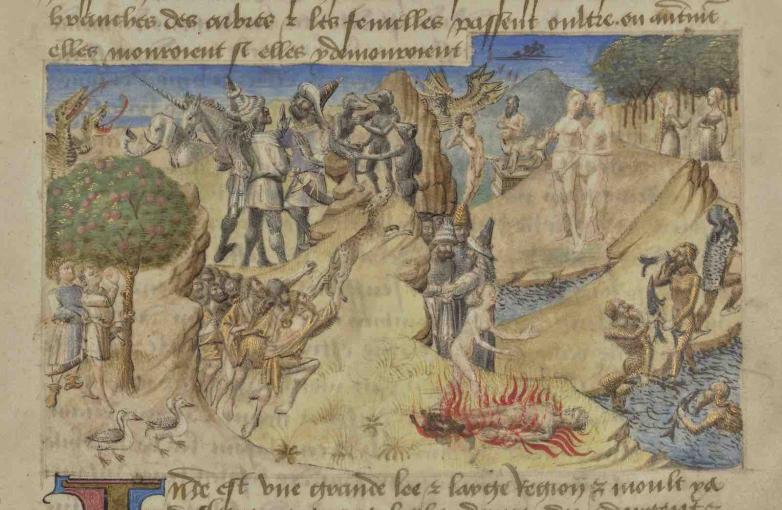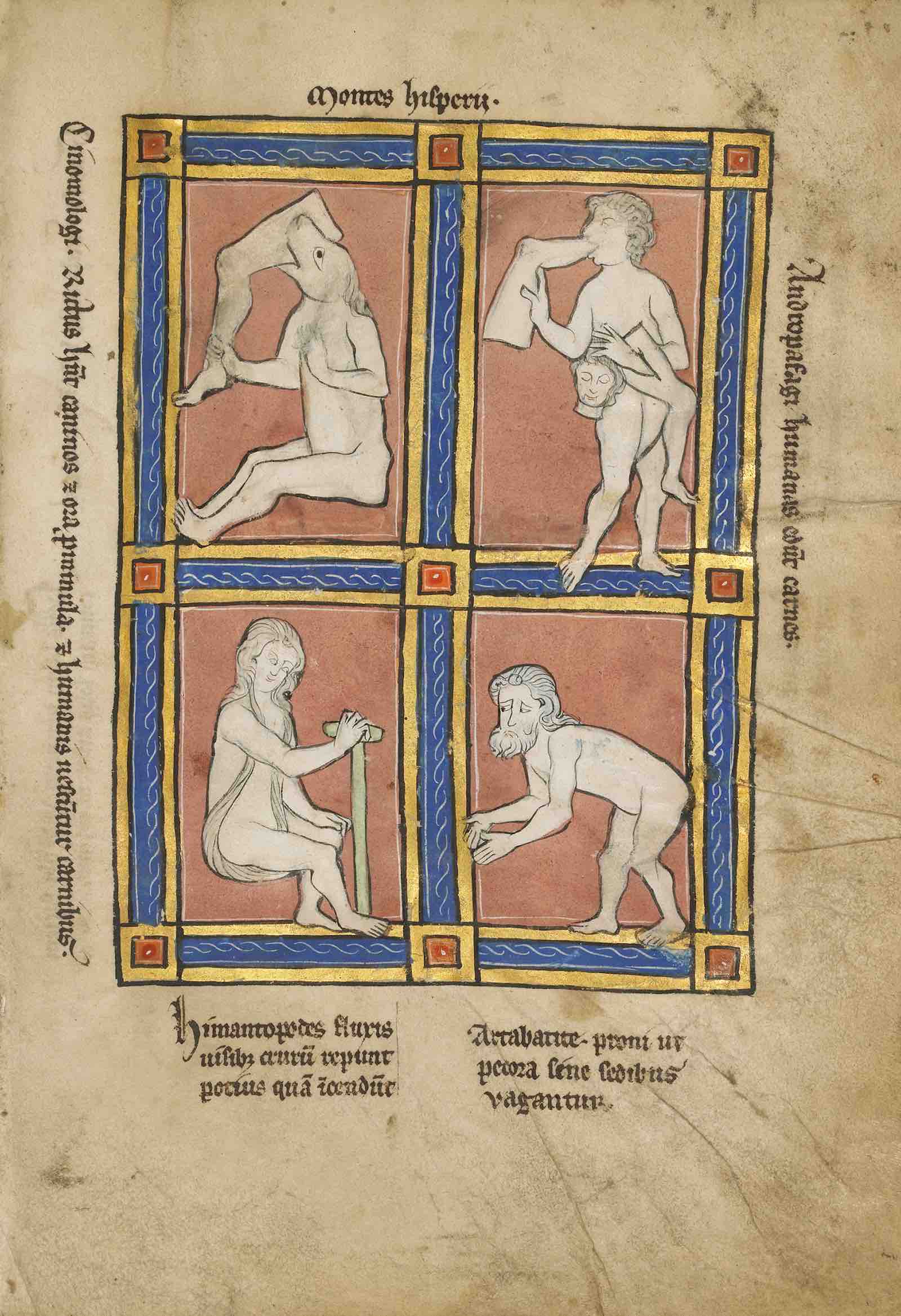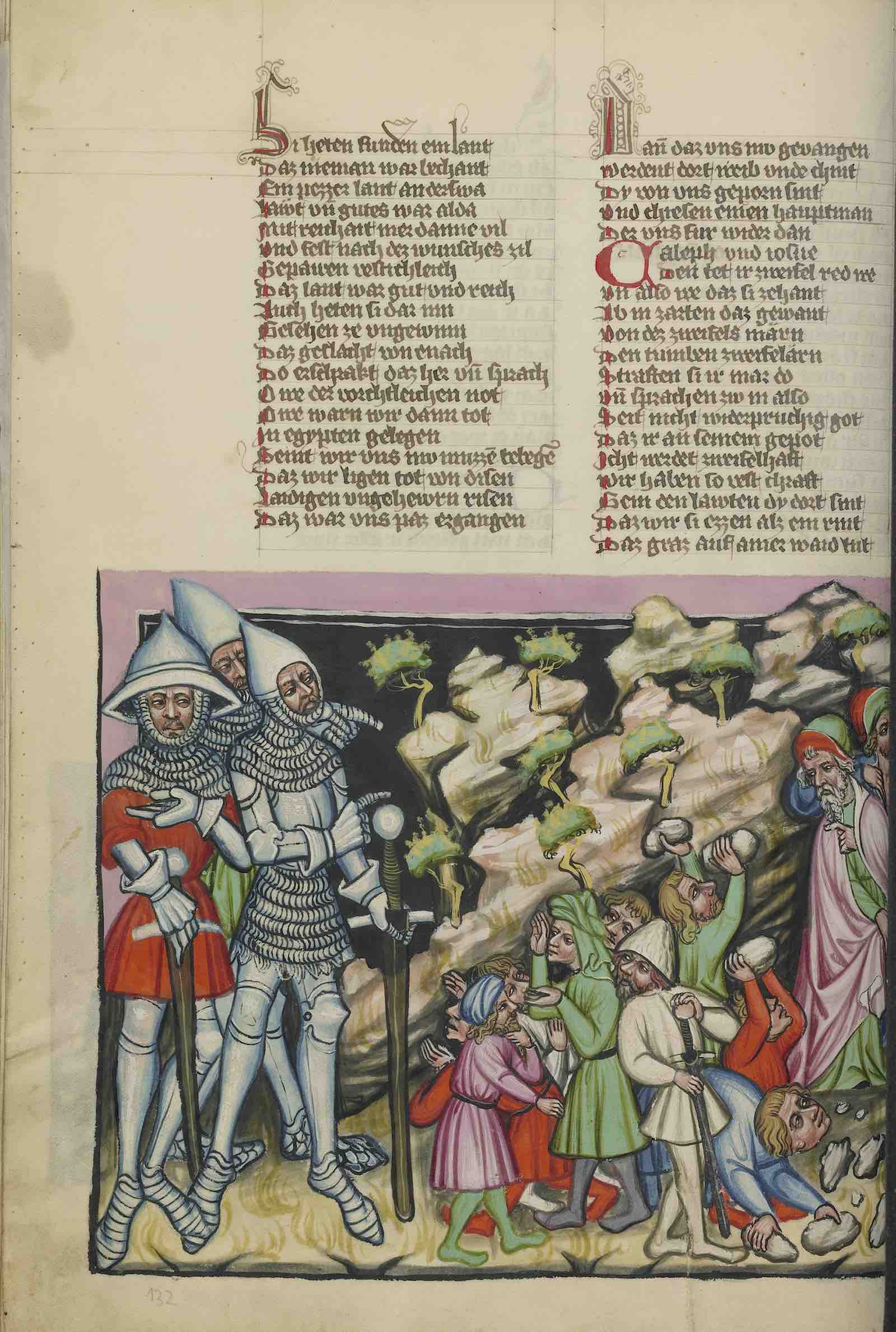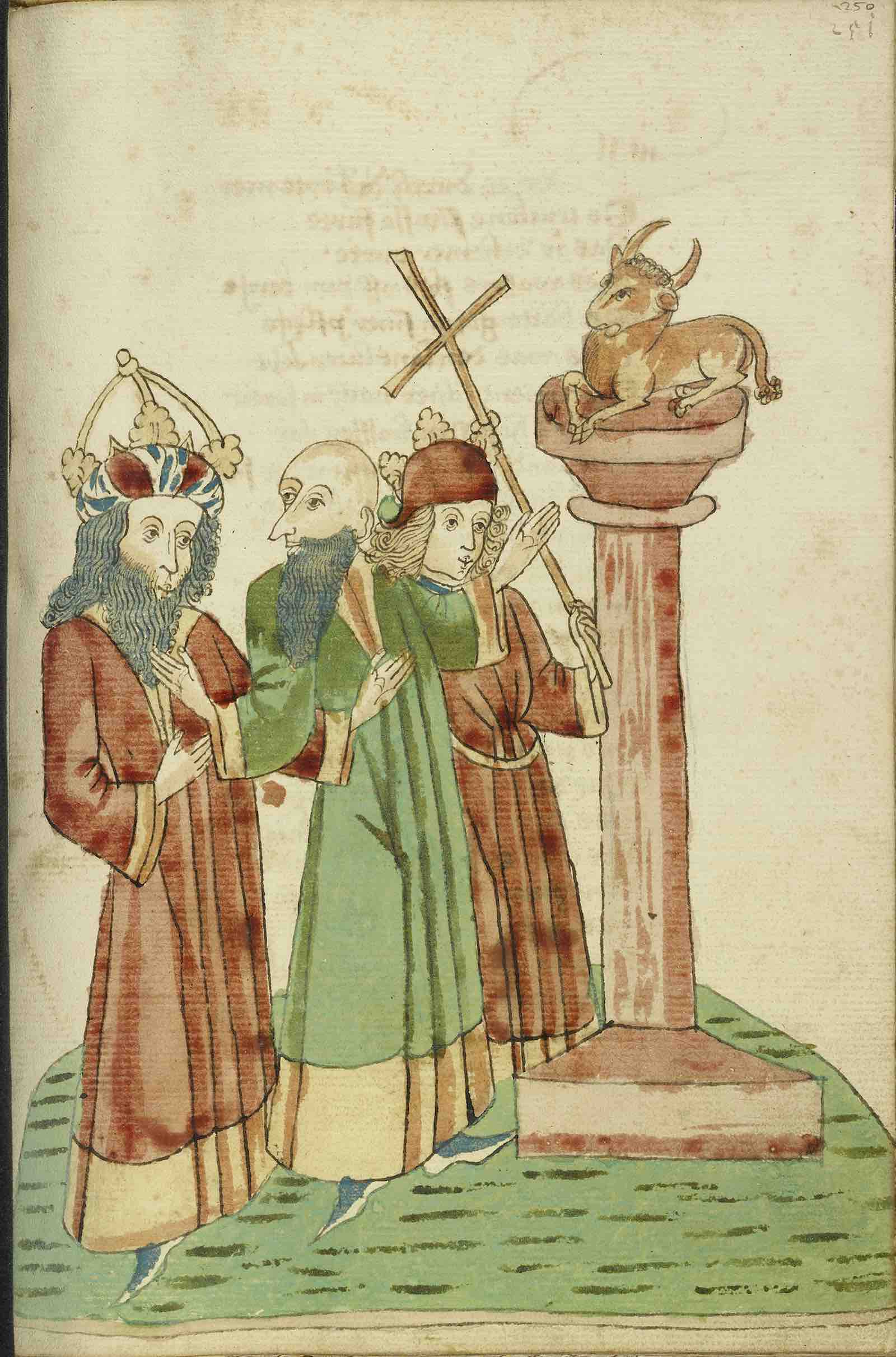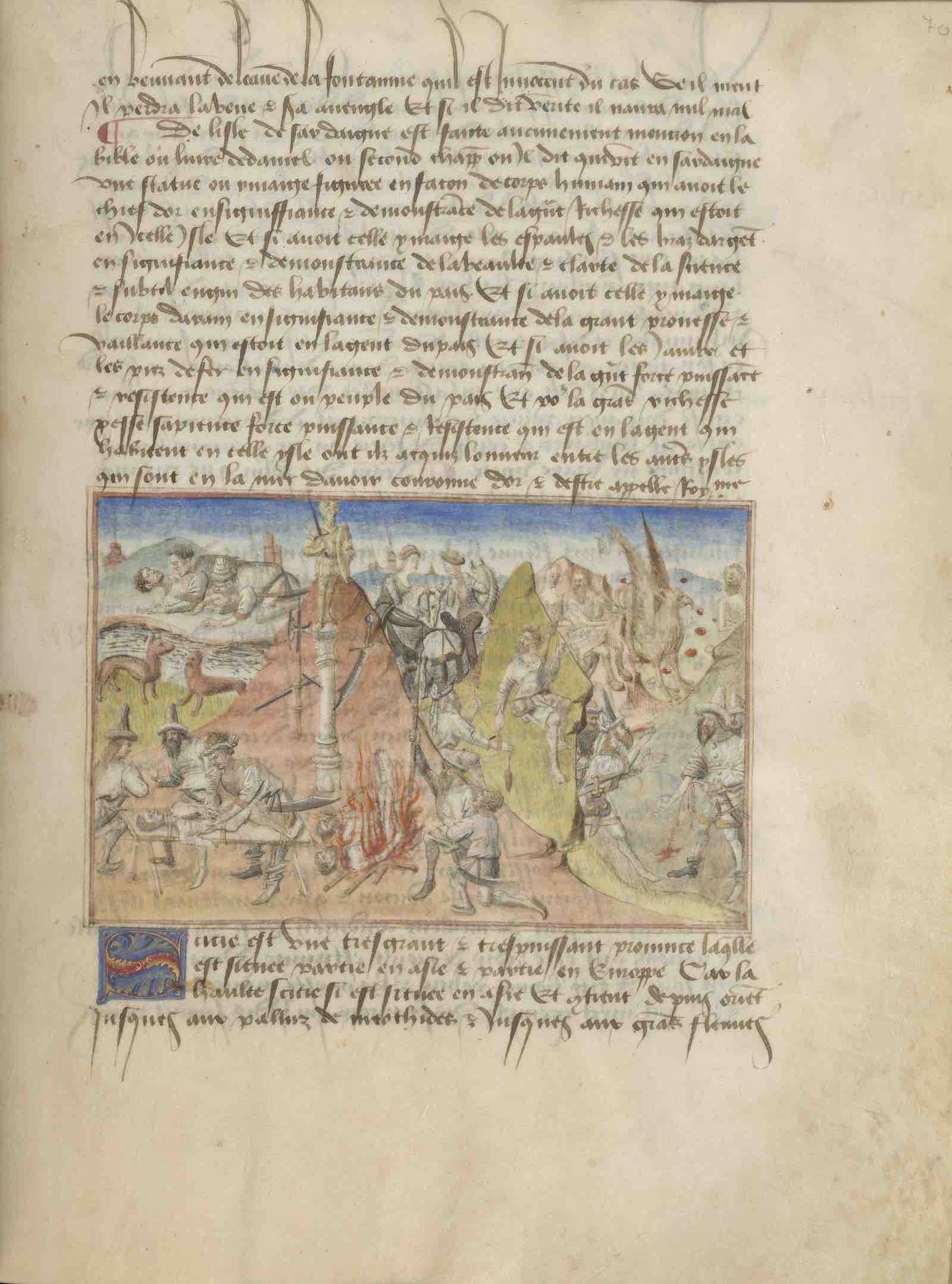The twin manuscripts containing The Book of Marvels will highlight the images of Scythia and India, two of the numerous locations mentioned in the text. The Scythians, known as fearsome nomadic warriors, inhabited a vast area stretching from China to north of the Black Sea from around 900 to 200 BCE. In The Book of the Marvels they are portrayed simply as brutal attackers from a land far removed in time and geography from medieval Europe when in fact Scythians possessed a sophisticated culture with impressive achievements in technology and the arts.
During the European Middle Ages, India was a place of highly developed and interlocking cultures, languages, and religions, yet was often mischaracterized as a land of savage peoples and strange customs in the pages of medieval manuscripts. The depictions of Scythia and India in the exhibition offer examples of how manuscripts like the Book of the Marvels reduced the identities of unfamiliar peoples and instilled xenophobia in the minds of readers.
“The compelling but mostly fictitious descriptions in The Book of the Marvels were intended to entice European readers with wonder, while simultaneously repelling them and reinforcing their ideas of superiority,” said Elizabeth Morrison, senior curator of manuscripts at the Getty Museum. “The exhibition shows how imagery can actively contribute to a process of exclusion in which individuals and groups are seen primarily in terms of their difference from one’s own community.”
Additional objects, drawn from the Getty’s collection, will expand on the themes seen in The Book of Marvels manuscripts including an encyclopedic text from medieval Germany containing a map of the world as it was known in 1493.
A complementary show, The Book of Marvels: Imagining the Medieval World, will take place at The Morgan Library and Museum from January 24 to May 25, 2025. On July 12, Getty will host a discussion about travel narratives, Art Break: An Armchair Traveler's Guide to the Medieval World, with Morrison and Markus Cruse, associate professor of French at Arizona State University.

